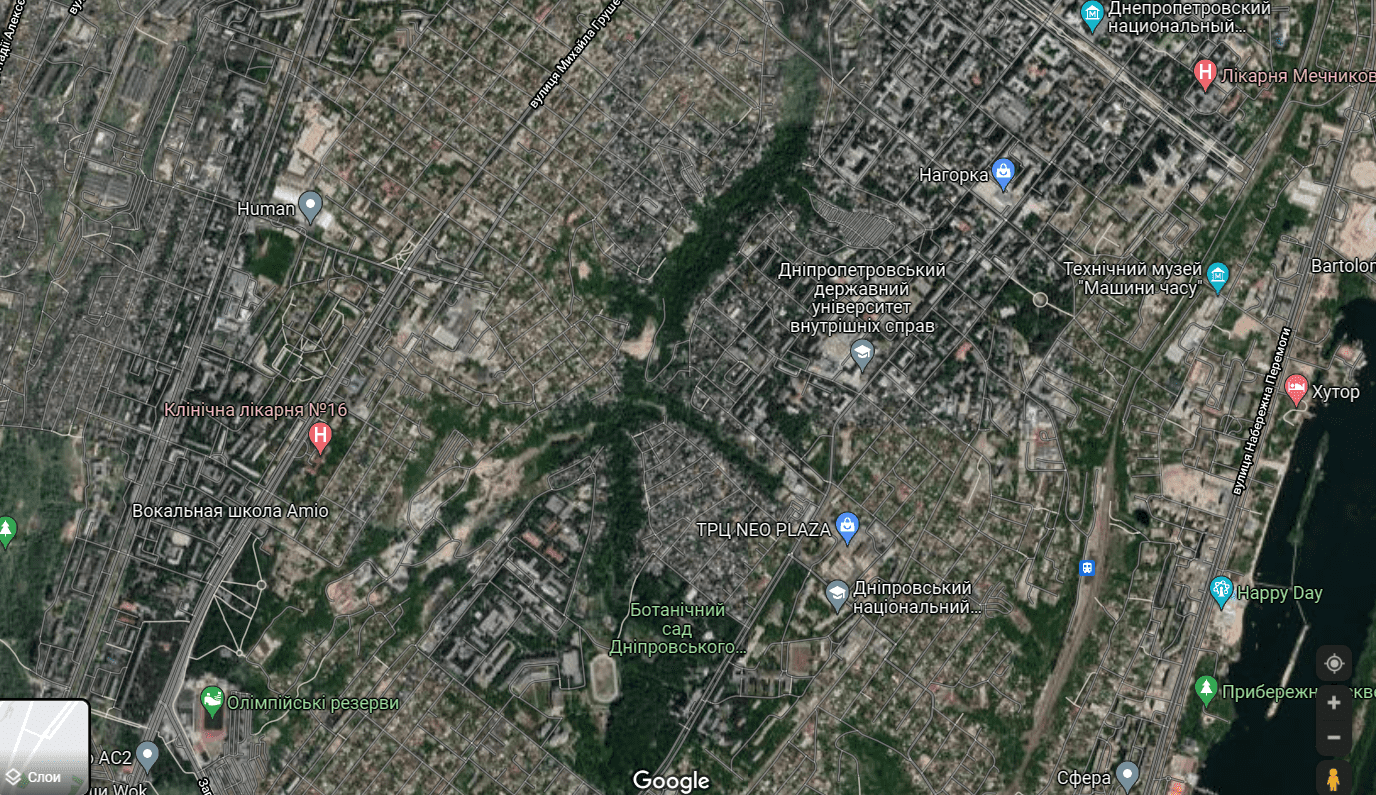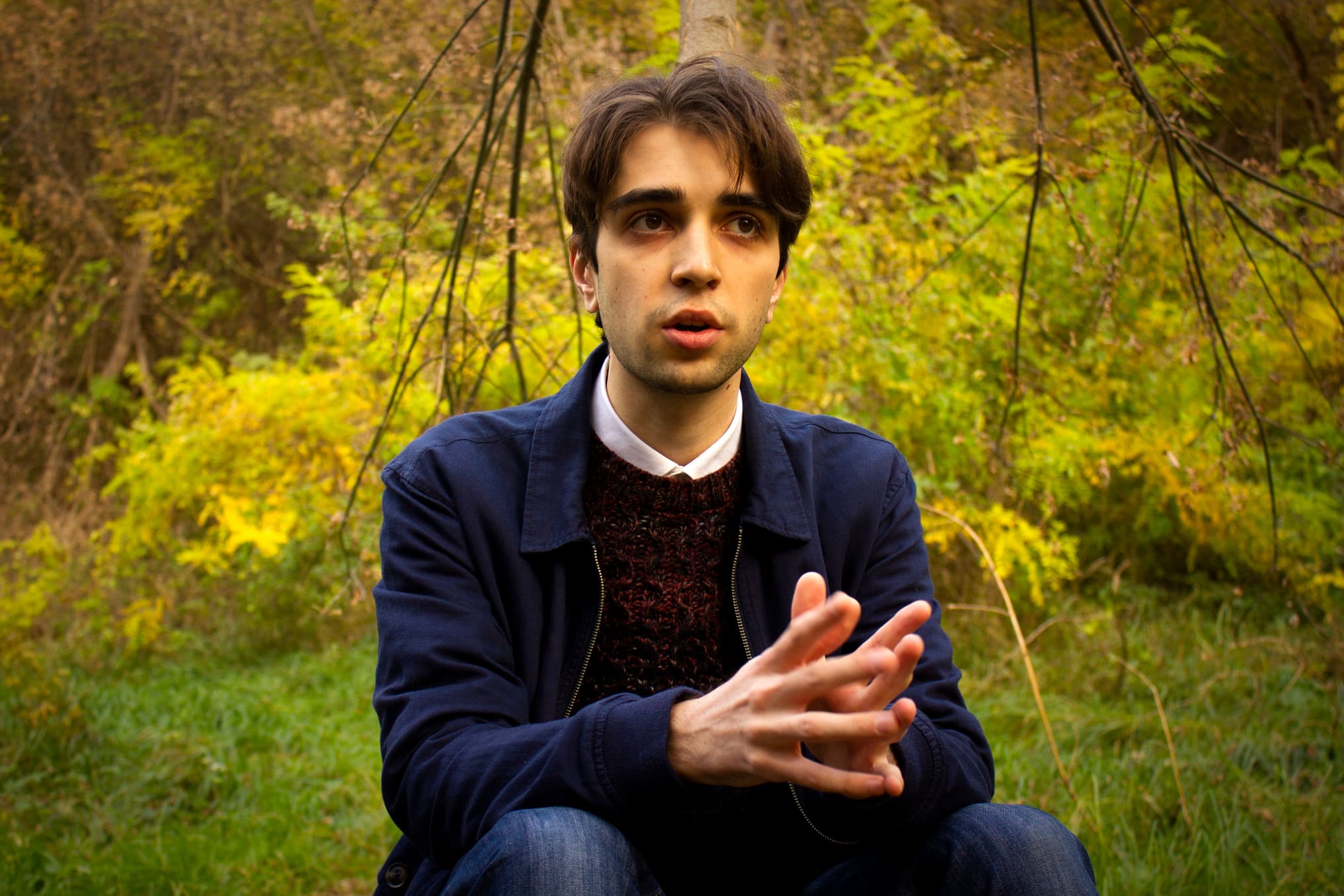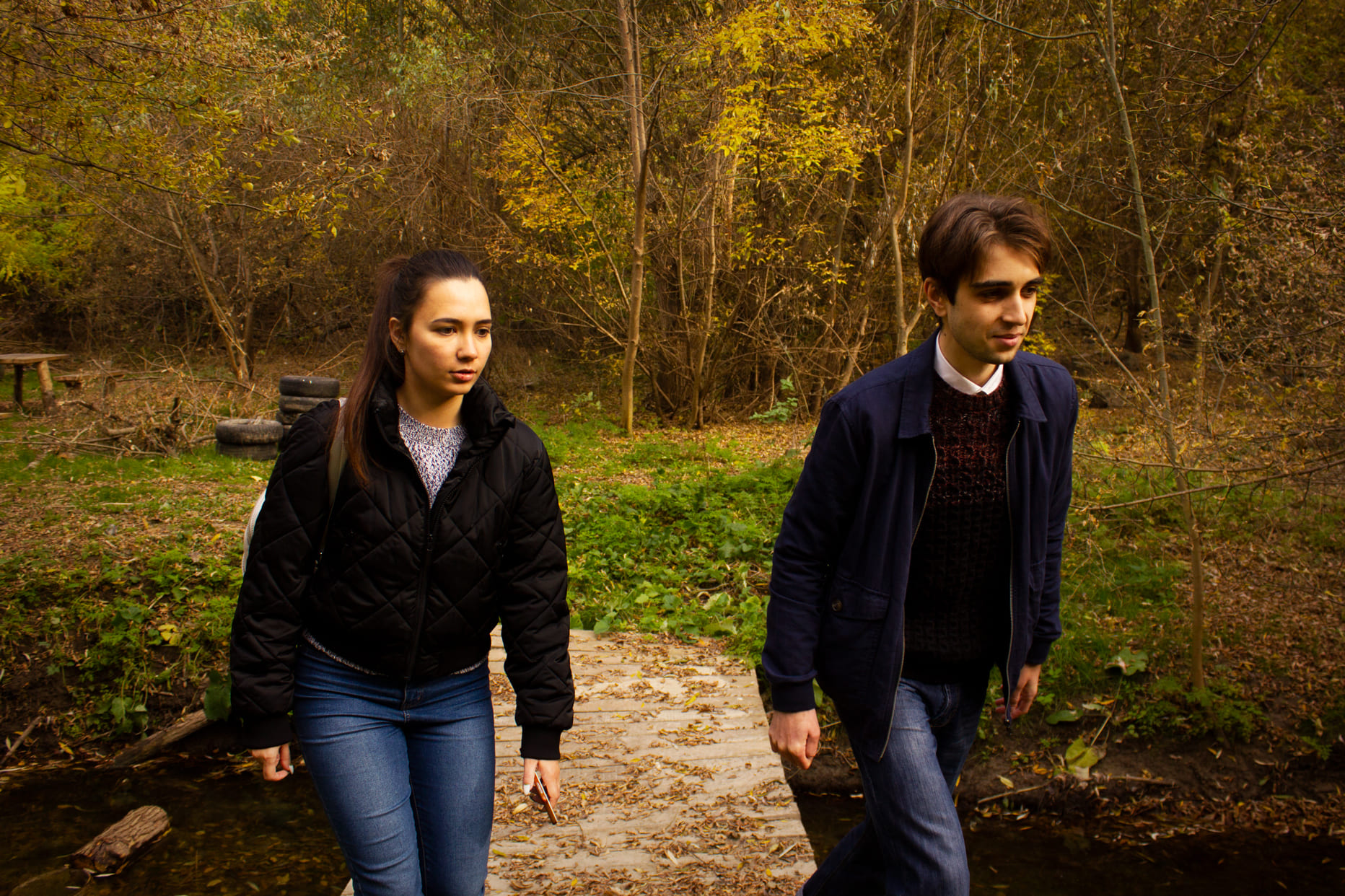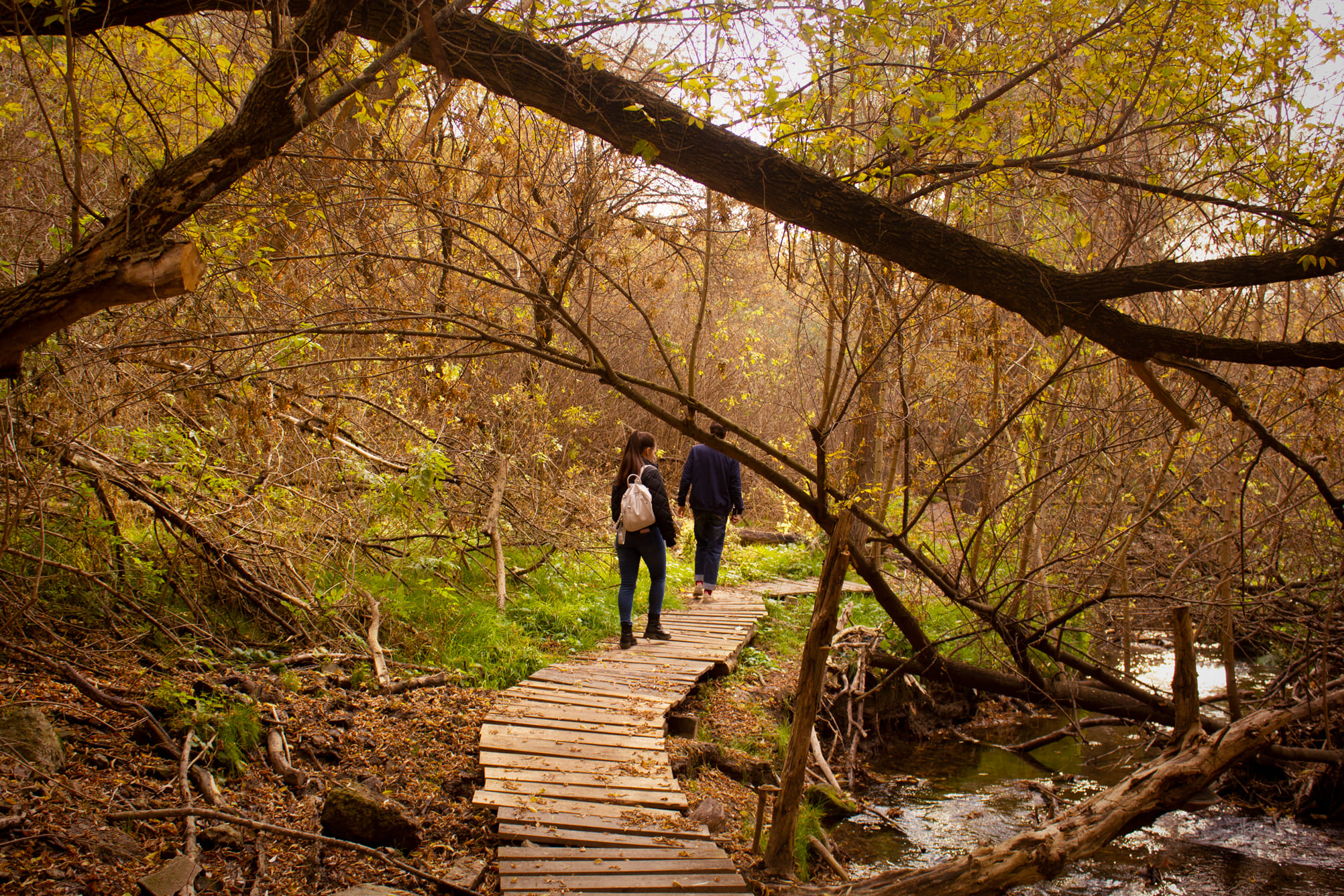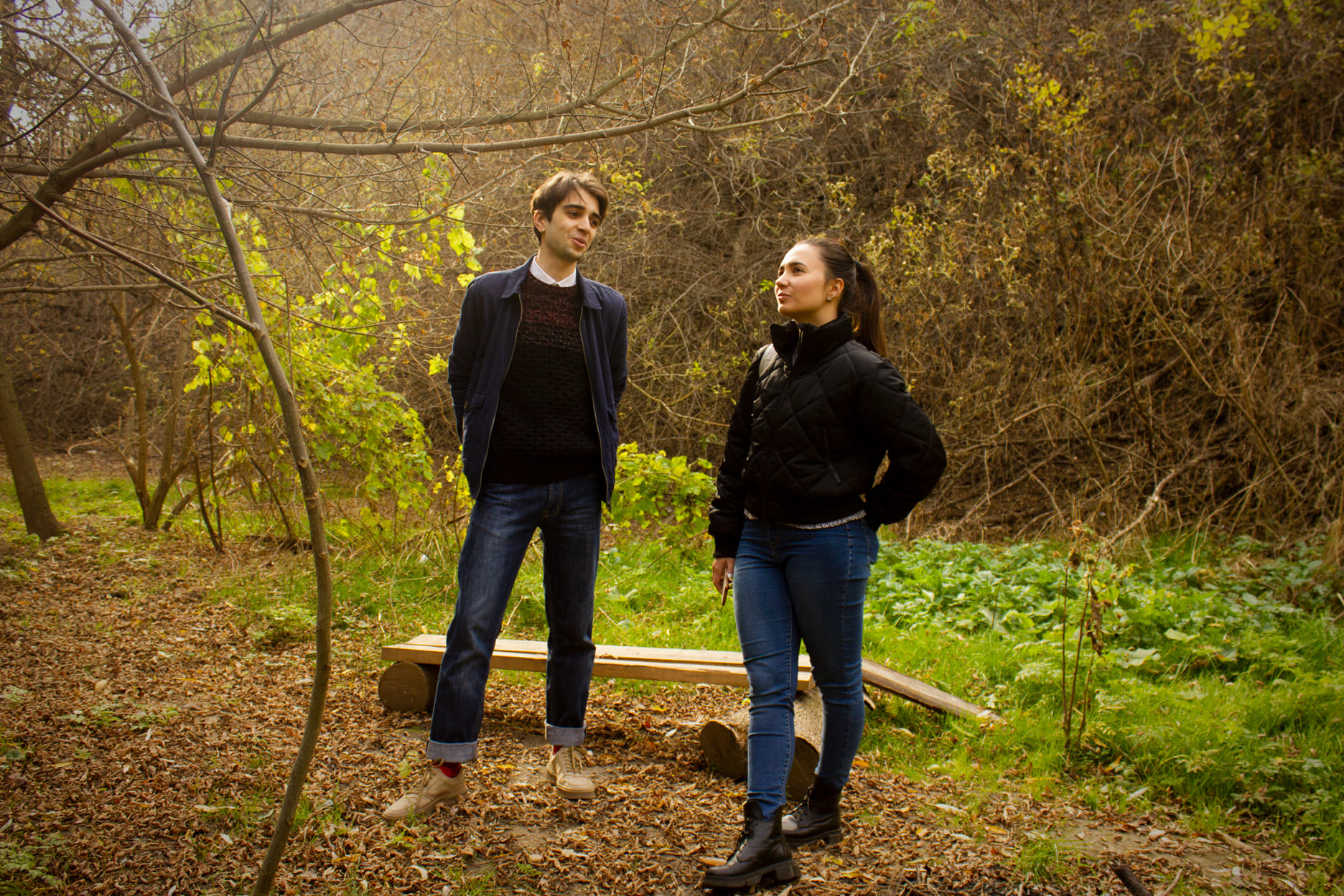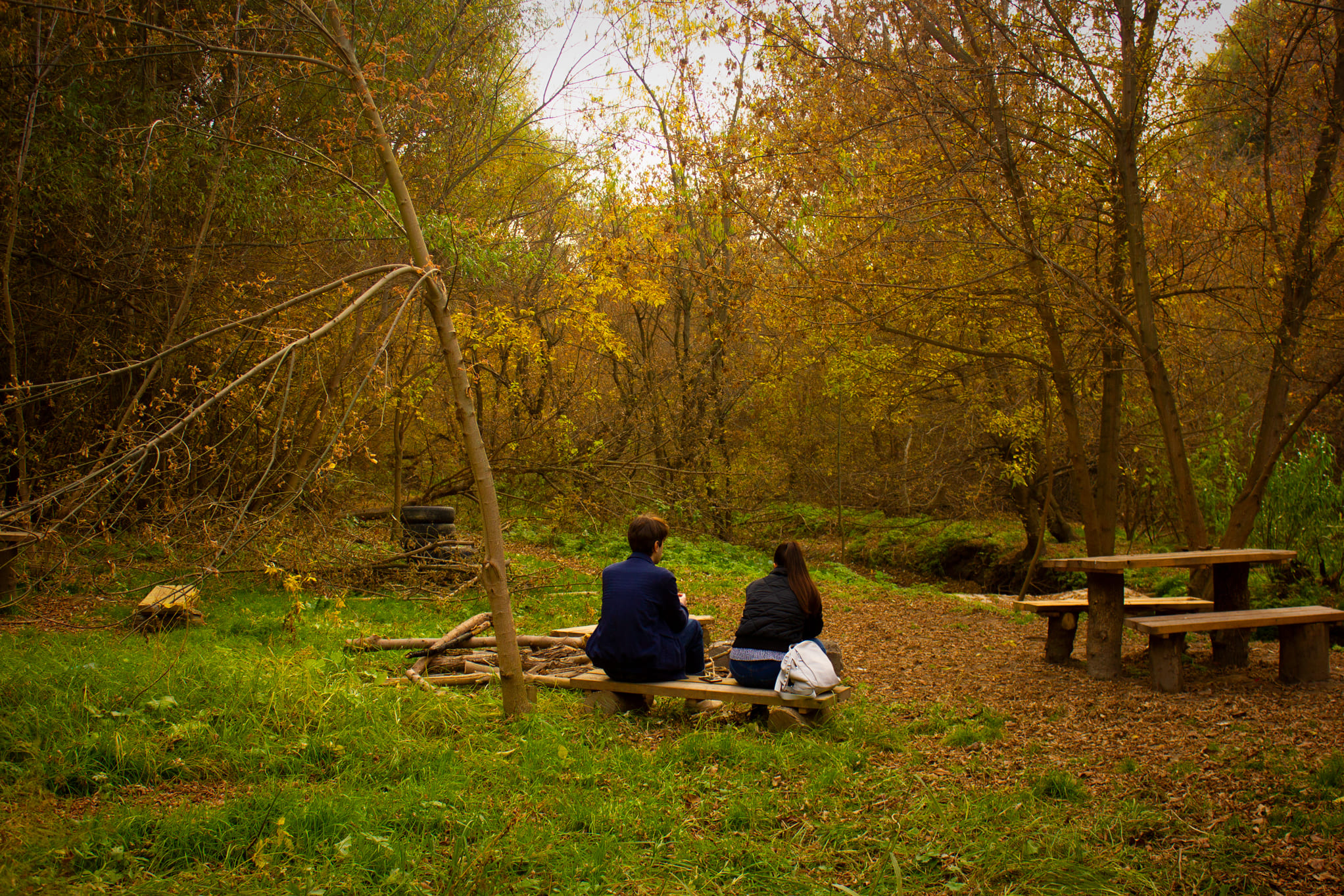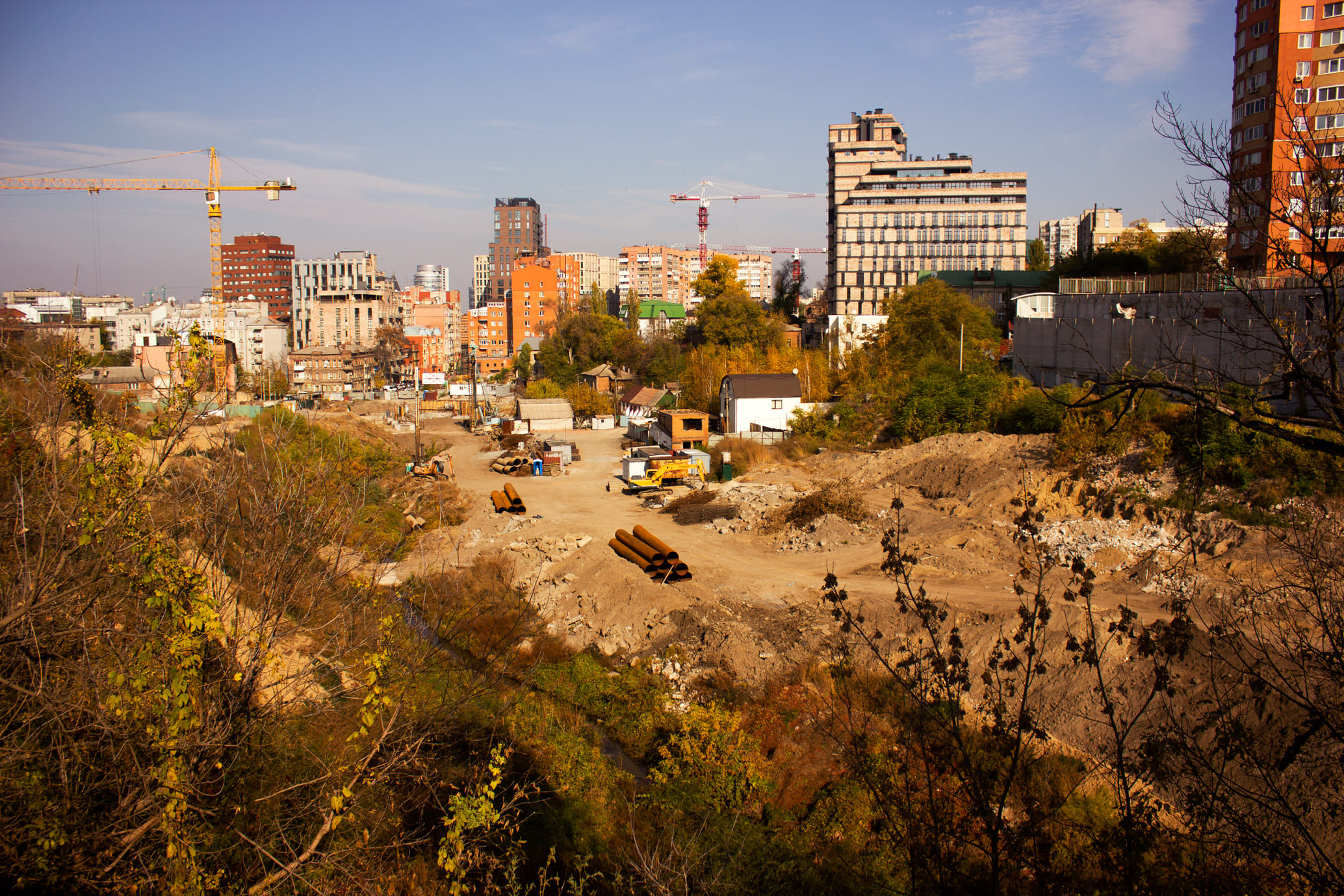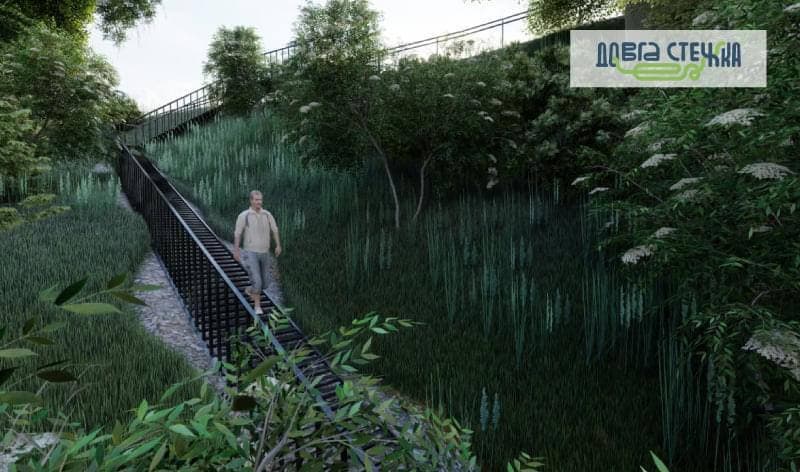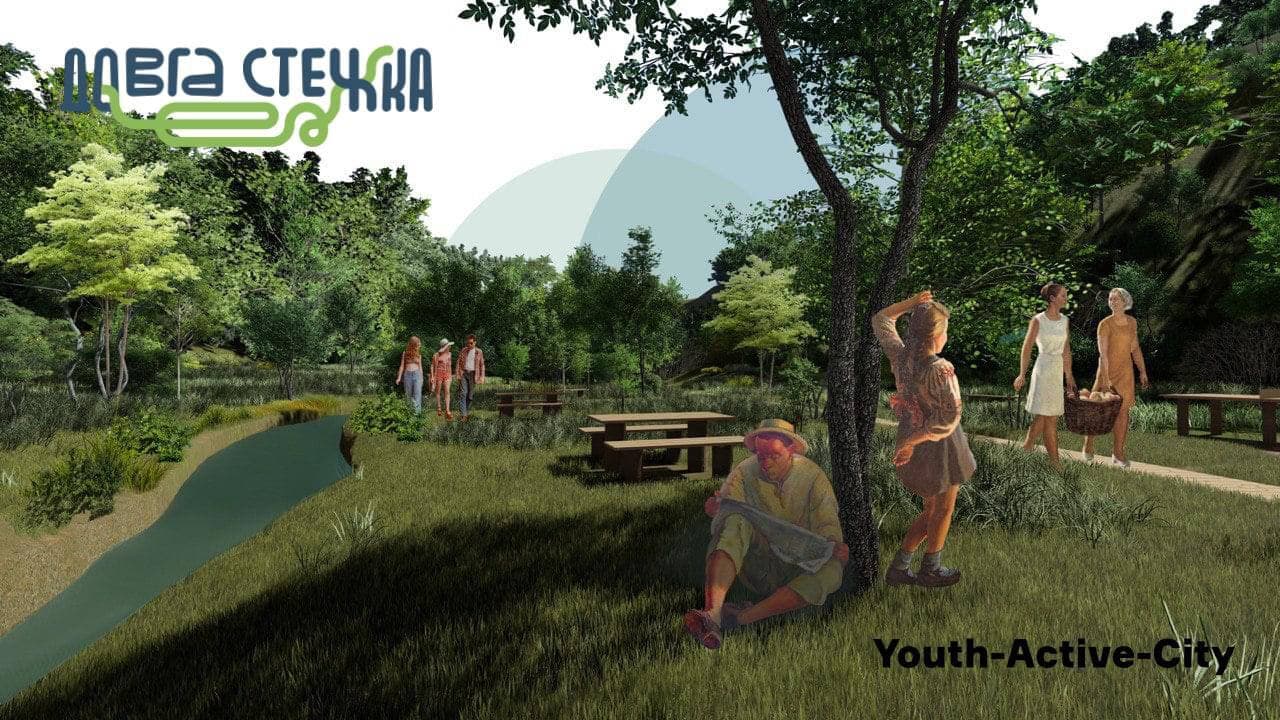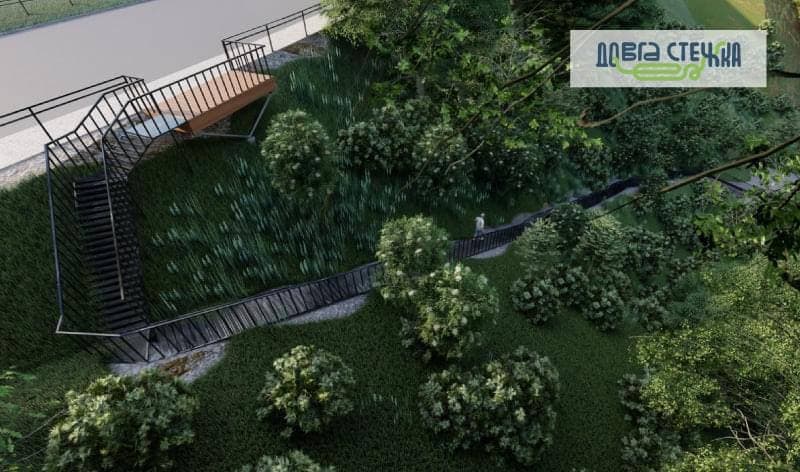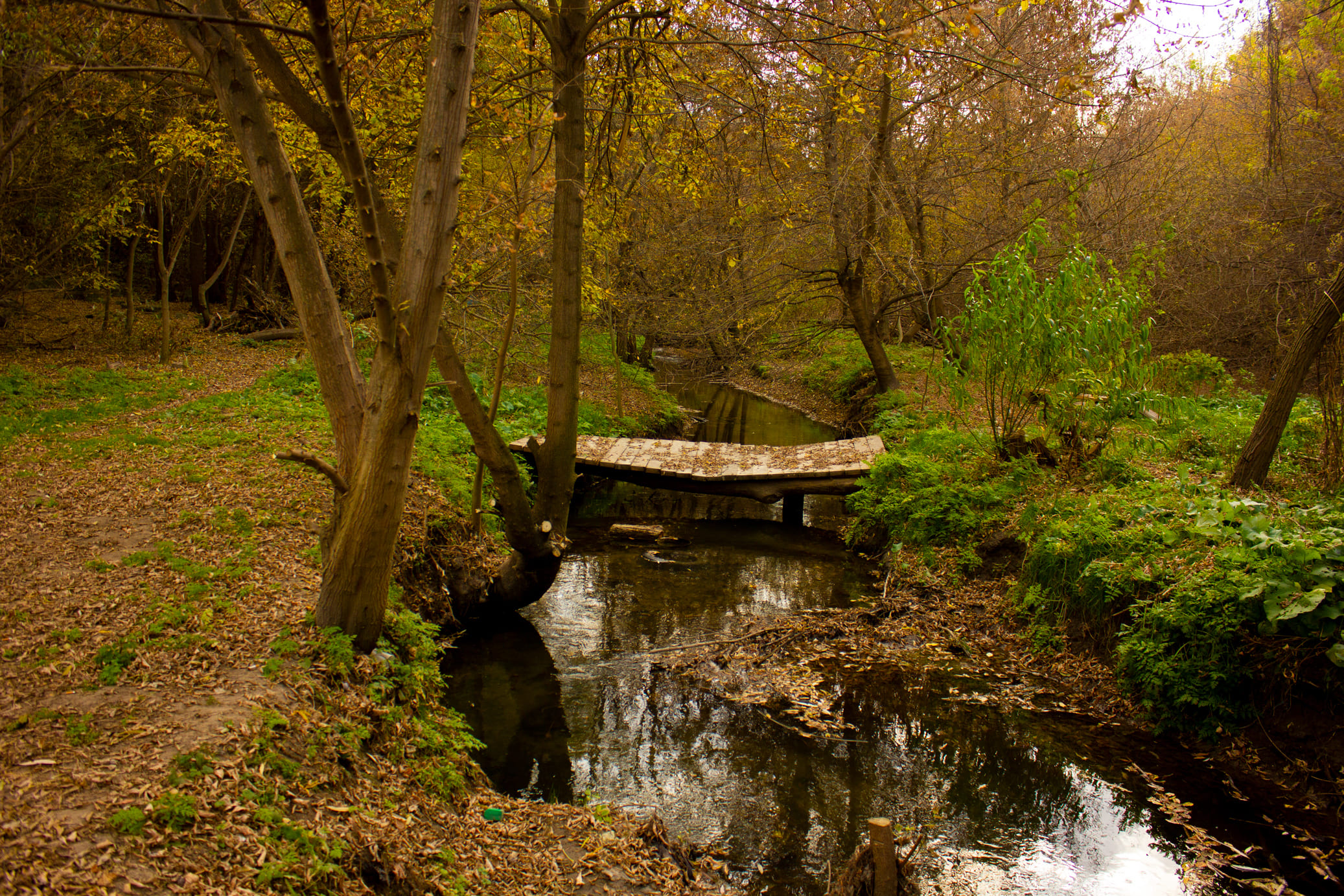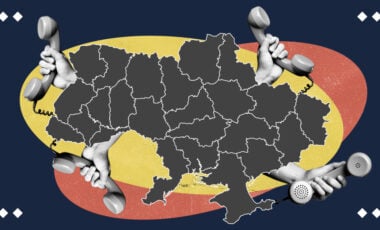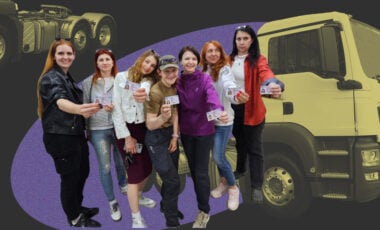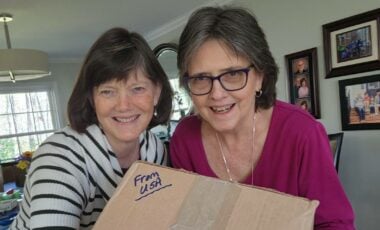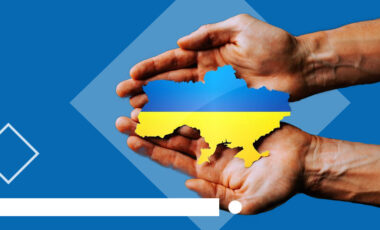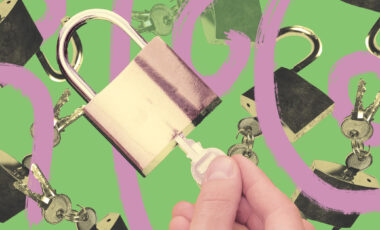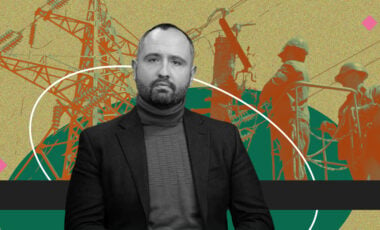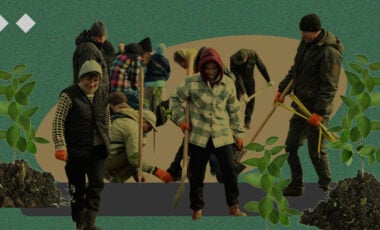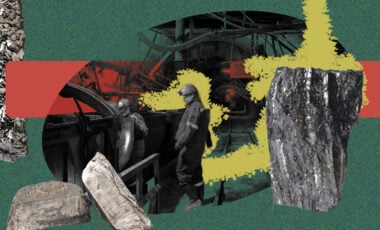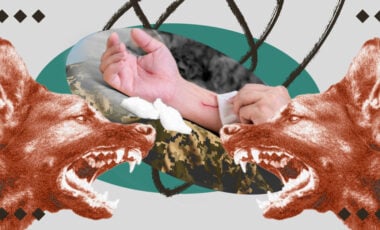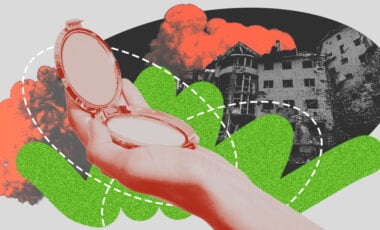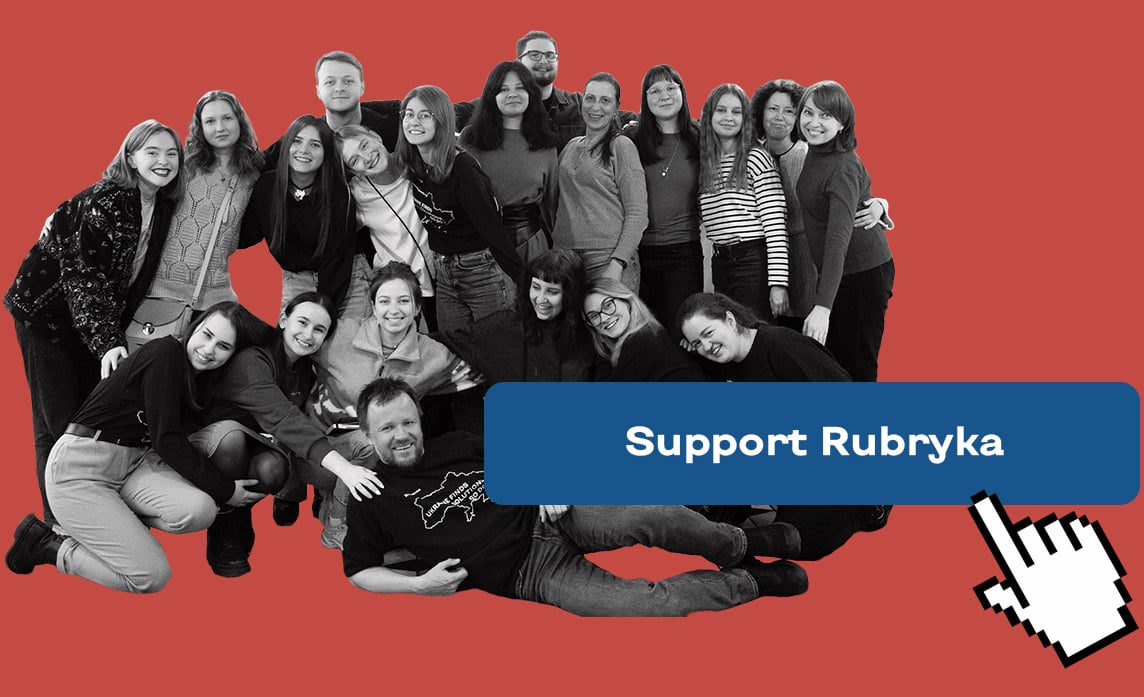From an abandoned place to a recreation spot: restoration of Dovha Balka in Dnipro
This is the story of one city ravine that was noticed by activists.

79 hectares of a green area that crosses Dnipro. It starts near the Zaporizke highway and ends in the city center. This is an abandoned and discarded Dovha Balka, or it was like that before. Now active residents of the city drew attention to it. And they even figured out how to turn this place into a recreation area. But is it real? Read in our article.
What is the problem? Abandoned ravine in the center
A curving river, yellow leaves rustle in the water, sunlight penetrates through densely standing trees: it would seem, it's a location for an autumn photoshoot outside the city. This is Dovha Balka, formerly Krasnopovstanska. On the map, it looks like a green artery passing through most of the city (the beginning is Zaporizke highway, and the ending is Patorzhynskoho Street, the length of the ravine is 79 hectares).
But only those who are already familiar with it and know which side to enter can get into Dovha Balka. Because the territory looks like an abandoned thicket, you'll have to wade through the branches of densely growing trees and bushes that hit you in the face.
If you're already inside, then you won't be able to enjoy nature: some of the trails are flooded, garbage is scattered along the ravine slopes, and in general, it's not clear where to go. And in the dark, this area looks just dangerous to visit.



This problem needs a hero! "I believe in this space"
A steep descent over the stones into the thicket is a road to Dovha Balka, shown by Denys Hirevoi. Not to roll down, you have to put your legs sideways. But the guy convinces: it's the most convenient way to the green zone on the near-central streets.
"I believe that when people come to this space, they'll perceive it as a place to relax," says Denys.
Denys is completing his studies as an architect and for several months now he has been a part of the Dovga Stezhka project, a revitalization project to restore Dovha Balka. Denys is responsible for the concept of the green zone development: how it will look in the future.
"I work with several architects. We develop the details of the project. We're trying to present a comfortable and stylish space. People will be able to come here to relax and enjoy nature."
What is the solution? "Dovga Stezhka"
Dovga Stezhka, which includes Denys, is a public initiative. Two years ago, architects, urbanists, urban researchers, and activists gathered together to transform the ravine, to make it a new recreational area in Dnipro.
They are confident that:
- Dovha Balka is the future place for the rest of the townspeople. If the territory becomes well-groomed and equipped, companies of friends or families will be able to come here.
- Dovha Balka is a convenient transit area. It will become a green corridor that will connect parts of the city with pedestrian roads. Activists believe that if it is equipped, residents will feel more comfortable. Students will be able to walk from the university to the city center, shortening their journey by several kilometers. Here you can walk with your pets or jog.
- Dovha Balka will become one of the largest green areas in Dnipro, and the biggest one in the city center.



Now about 15 people are involved in ravine problems; this is the permanent project team. Each has its area of responsibility: someone is engaged in social media, someone is editing video, someone is arranging the space itself, for example, working with a screw gun. Sarzhyn Yar Park serves as an example for the team. These are 12 kilometers of Kharkiv ravine slopes, a natural monument of local importance.
"A beautiful park was made from the same abandoned ravine in Kharkiv, which is now praised by the entire country. However, there was a large infusion of funds, our volunteer project can't boast of the same thing. But for us, it's an example of long-term development, a plan for the future," says Denys Hirevoi.
How does it work?
The activists of the initiative began to prepare Dovha Balka with cleaning. Since spring, they've organized a clean-up "Falafel Against Garbage," where residents of the city were invited through social media. They attracted them with food and music: after work, the tired guys feasted on falafel listening to Max Paragraph, a Dnipro musician, one-man-band in most cases: guitar, stomp box, and accordion. After a few such gatherings, it was possible to take out up to 15 packages of trash.
After the clean-ups, they started to arrange the territory. One educational project in Dnipro helped with money for materials for future outdoor furniture. In the clearing, the guys made several wooden benches and tables. Nearby, a bridge was built across the Zhabokriach River (before it was not possible to cross to the other side). The territory of the ravine is wet, sometimes streams cross the path. To make it easier to walk, these parts of the road were covered with wooden decks. Now you can cross the ravine dry. In the future, a rain cap will appear here, and signs will help to pass the ravine.



Also, the guys from Dovga Stezhka began to work on the concept of a complex beautification of the ravine. They want to create a smart strategy to intervene in the ecosystem without disrupting it.
Ravine's problems
The young architect Denys Hirevoi calls public opinion one of the major problems. Dnipro residents simply don't know that they live close to nature. They're familiar with Tunnelna Balka, located on the outskirts of the city, and it's where people come to rest. But few have heard of Dovha Balka.
"This ravine in the city center isn't perceived as a recreation area or something like a park area. But our goal is to attract as many people as possible. After all, we didn't know about this ravine as much as they do now."
You can follow the transformation of Dovha Balka in the project's social media. Also, project participants were repeatedly invited to talk about the project in the media.
Garbage is the second problem. Trash has been dumped into the ravine for many years. There is also construction waste, and even car tires, which were thrown out from the nearest tire shops. Project representatives talked with the city's Department of Parks and Recreation to help with garbage collection. Officials have promised to support this initiative in the future.
The next problem is building development. Part of the ravine, which adjoins the center of Dnipro, has already been cleared for high-rise buildings. But members of the territory restoration project hope that the rest of the territory will not be affected.
"According to the general plan of the city, a highway is foreseen along the bottom of the ravine. Of course, we wouldn't want that. But, as we know, our general plan is being implemented by about 15%. So it's not the most pressing problem," says Denys Hirevoi.
Did they really succeed?
Families and companies are already coming to the ravine: they walk, have picnics. The activists reminded the locals of an island of nature in the middle of the city; many helped during the cleanup. This year the public initiative has submitted a draft for the Participation Budget. For city money, they planned to make a comfortable staircase to enter the beam (exactly in the place where we descended), but this decision wasn't supported by the city council.
The guys didn't despair and launched a crowdfunding campaign. They're collecting 50 thousand hryvnias to continue their work. After all, the project is completely voluntary, and you can't do much without money. Under the terms of the crowdfunding campaign, if this amount is raised within two months, the International Renaissance Fund will double it. As of today, the guys have already managed to collect 20 thousand hryvnias more than the goal they set: they have already collected more than 70 thousand hryvnias! First of all, this suggests that the townspeople see Balka in the same way as activists, and are ready to help them create an even more convenient urban green space.
This money will go to:
- Purchase of materials and tools for arranging Dovha Balka;
- Payment for the work of architects who are engaged in the capital project and green zone development concept;
- Creation of a short film to popularize the ravine among the townspeople;
- Advertising of the project.
The guys plan that next year they will be able to present a working version of the city development concept. After, they plan to transfer all their developments to the city department of parks and recreation. They promised that they would help with their implementation.
Tips from "Dovga Stezhka": what to do if you want to tidy up the green area
- Find out who has a green zone on the balance sheet and enlist their support. The territory of Dovha Balka is subordinate to the city. The guys talked with officials about the future arrangement of this territory.
- Talk about your project as much as possible: be sure to start social media accounts and try to attract local media to the problem. This will help reach more people who will know about the problem and help with its solution.
- Organize unusual events. "Dovga Stezhka" fed the townspeople with falafel on the cleaners, and the famous in the Dnieper Max Paragraph entertained them. This approach is perceived with interest.
- Apply for project support programs. "Dovga Stezhka" participated in the Participation Budget. The initiative was not supported, but in any case, every opportunity should be used, the guys are sure.
- Start crowdfunding. During the day of the collection, 33 thousand hryvnias were donated to the initiative, over the weekend, it was already 68 thousand hryvnias, 18 thousand more than the declared fifty. To date, 70 302 UAH have been donated for the restoration of the ravine.
Photo: Alexandra Tkach, for Rubryka


